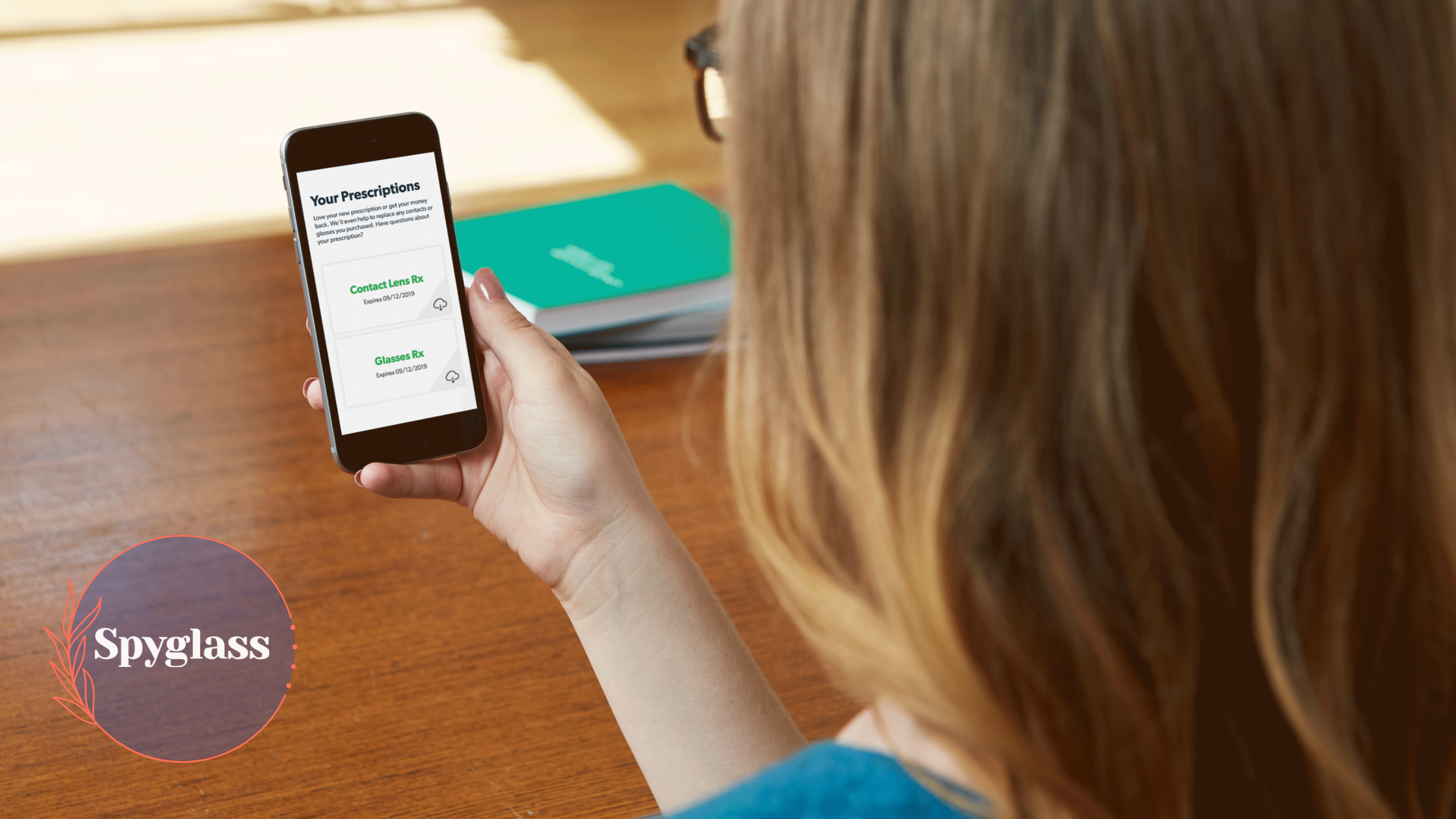Consumers are different now. Are you ready?

Looking back to fifteen years ago, 2007 sure seemed like simpler times:
- The last of the Harry Potter books came out
- 🤓The books were better than the movies
- Apple launched the first iphone
- 🤳pretty sure I still had a flip phone
- Bob Barker finished the Price is Right
- ⛳big fan since Happy Gilmore circa 1996
- Gas was $2.80
- 🤑with inflation today it would be $3.16
- Internet download speeds were flying at 3.5mbps
- 📶I hear 1000mbps (or 1gig!) is now a thing
Fun Times
Perhaps the biggest single thing I remember from that era surrounds what happened in late 2007 when the US economy took a big hit, as we entered into the “Great Recession”. This didn’t end until June 2009 which was the longest recession since WWII.
I recall (fondly) these being fun times. My wife, also an OD, had just signed a 5 year lease to open her own private practice (who wouldn’t agree that opening a practice and having our first child during the great recession was a fantastic idea!). I was working my first job out of school, a corporate employed OD role, covering every weekend and most nights. In March 2008, we welcomed my first daughter.
We hoped to buy a house, maybe even lease a better car than my wife’s Ford Focus that had 200 thousand miles with the side mirror duct taped on. Those were unquestionably stressful times but, as we told ourselves in 2007, hang in there because there’s light at the end of this tunnel
We endured those first few tough years, and had another daughter mixed in there. My wife’s practice not only survived, but thrived. She has become a staple in our community, with a great following of loyal patients; however, having built a successful business to date hasn’t eliminated my wife's anxiety about the future of her private practice, something to which I’m sure you can relate.
As we look out at our business and the landscape in which we work, there are a few key similarities and some even more important differences to take into consideration.
Staffing
First, there are always staffing shortages or issues. COVID was a challenge, as is a seemingly never ending shortage of associate providers in our area. “The Great Resignation” of 2021 and 22 has reshaped the way people think about work, and the way companies think about services or products they offer.
In a study done earlier this year, the U.S. Bureau of Labor Statistics reported a potential need of 275,000 more nurses by 2030 [1]. For Optometry, the 2021 Optometry Healthcare Business Insights Report said nearly 60% of optometry offices do not have enough staff to operate to their full potential. [2]
Payors
Payors have always competed to win new employers which, once upon a time, drove costs down for consumers and provided a mechanism for ECPs to thrive in a competitive market. These days, the cost savings to consumers is marginal and the reimbursement for ECP’s has been compressed by market forces we’ll touch on later.
Out of pocket costs remain a big concern for patients and consumers. A recent consumer survey found that 86% of respondents worry that their benefits do not cover either a portion or all of their exams, procedures and treatments for the year.[3] Some payors are even downsizing their networks, which suggests out-of network benefits utilization will become more and more common.
Inflation
The cost of everything has gone up. Materials, equipment, labor, rent - you name it has gone way up. My wife has had to get creative (think in-house finishing) to offset, but it still stings. Inflation was at 8.2% in September 2022 (vs 1.37% September 2021)[4] One word sums this up most effectively: ouch.
Competition
Ours has always been a competitive marketplace that has only gotten more competitive over time. Organizations, both in your community and online, are finding new and innovative ways to meet consumers where they need to be met. Additionally, if living through the weirdness of the last few years has taught us anything, it’s that consumers are becoming more innovative with the channels they choose in which to seek care. Yes, convenience is a key aspect, but they’re also looking for more personal care and experiences than the big boxes can or will offer.
History doesn’t repeat itself - it rhymes.
While some of what we’re discussing has echoes of 2007, we have a completely different set of tools available to us as compared to then. There are many ways to combat each of these issues, far too many to discuss here.
If you are considering leaning into innovation, consider this: eyecare through a consumer lens. Check out these three consumer-centric views:
Consumers rate convenience as one of their key priorities when seeking care. [5]
Quality of care is important, as is a personal relationship with their provider, but so is care that is “frictionless.” Convenience is one reason why telehealth is up over 38X from pre-COVID levels. [6]
Most practices can see up to 30% attrition, of which ⅔ is attributed to patient indifference. [7]
Almost 70% of people that leave a practice do it because they feel indifference towards the office. Lack of communication, a good (but not great) experience, lack of frequent touch points, all contribute to a lack of “stickiness” to the practice.
Technology can be a driver of satisfaction and experience.
At CES this year, experts predict “the use of virtual reality (VR) technology in healthcare to expand rapidly predicting the market will hit $30 billion within six years”. [8] This suggests that as more and more investments pour into this space, overall quality will continue to accelerate alongside great experiences for consumers.
So what do we do?
Tele-Health can be a very effective, and operationally simple way to drive innovation and differentiate your practice from others. Tele-optometry has the significant added benefit of improving your ability to connect with your patients when and how they want to connect. “The number of people using virtual doctor visits rose from 15% to 19% from 2019 to early 2020. This jumped to 28% in April 2020. A majority (80%) of those who have had a virtual visit said they would choose to have another.” says, Deloitte. [9]
Differentiate and engage
Telehealth gives the doctor a chance to compete for new patients which expands your addressable market. It improves retention with existing patients, and offers something that other local businesses cannot or do not. What a great way to combat indifference! Approved online vision tests can help you to stay connected with your patients, even during gaps in care or when there is an urgency. Most adults get an eye exam every 2-4 years, leaving a lot of opportunities to keep your practice top of mind.
55% of consumers say “trusted healthcare professionals” would motivate them to take a more active role in managing their health, while only 11% of consumers say that their regular provider recommended digital tools to manage their health. [10]
Increase Affordability
Telehealth is generally well-adopted by patients, and can save time/cost. Each non-productive encounter adds chair time, increases staffing costs. VDAP (Visibly Digital Acuity Product) is quick and easy, does not require an incremental equipment or hardware purchase, and can help optimize your chair time, freeing up schedule space for more productive encounters. Imagine how different your book looks with fewer post ops or follow ups taking up staff time, chair time, and physical space in the office.
Staffing and provider coverage can potentially be reduced or optimized. Need to take a quick vacation, but are worried about who will cover your prescription renewals? Need time to network and build your business in the community? Need time to work on broader business goals or implement a change? With Visibly, the “Doctor is always in”.
Open new opportunities
Tele-health enables new sources of revenue. Virtual office visits and in some cases comprehensive exams can now be done via tele-health. This unlocks marketing opportunities, e-commerce growth, and an opportunity to increase your capture rate of contacts and glasses, while lowering attrition rates on all sides of the equation.
Patients will still value the personalized feel the care your office provides, but sometimes they’d rather talk to you from the comfort of their home, without having to navigate driving, parking, all while making sure to leave enough time to go get that coffee before they come to your office.
And when do we do it?
Your patients want a convenient way to give you their business, bringing Visibly into your practice lets you make it easy for them, while simultaneously improving the cornerstone elements of your business.
The best time to plant a tree was 20 years ago. The second best time is now.
- Chinese Proverb
Sources:
- Forbes
- Weave
- Fierce Healthcare
- Y Charts
- Healthcare Dive
- McKinsey
- SolutionReach
- Everyday Health
- Healthcare Finance News
- Accenture
About Visibly
Visibly is a Chicago-based healthcare technology company founded in 2012, building digital vision care solutions that enable patient choice and access to care. Online vision testing is just the start; Visibly envisions a world where technology enables patients and doctors to connect easily and make other aspects of vision care more convenient and accessible to everyone.



